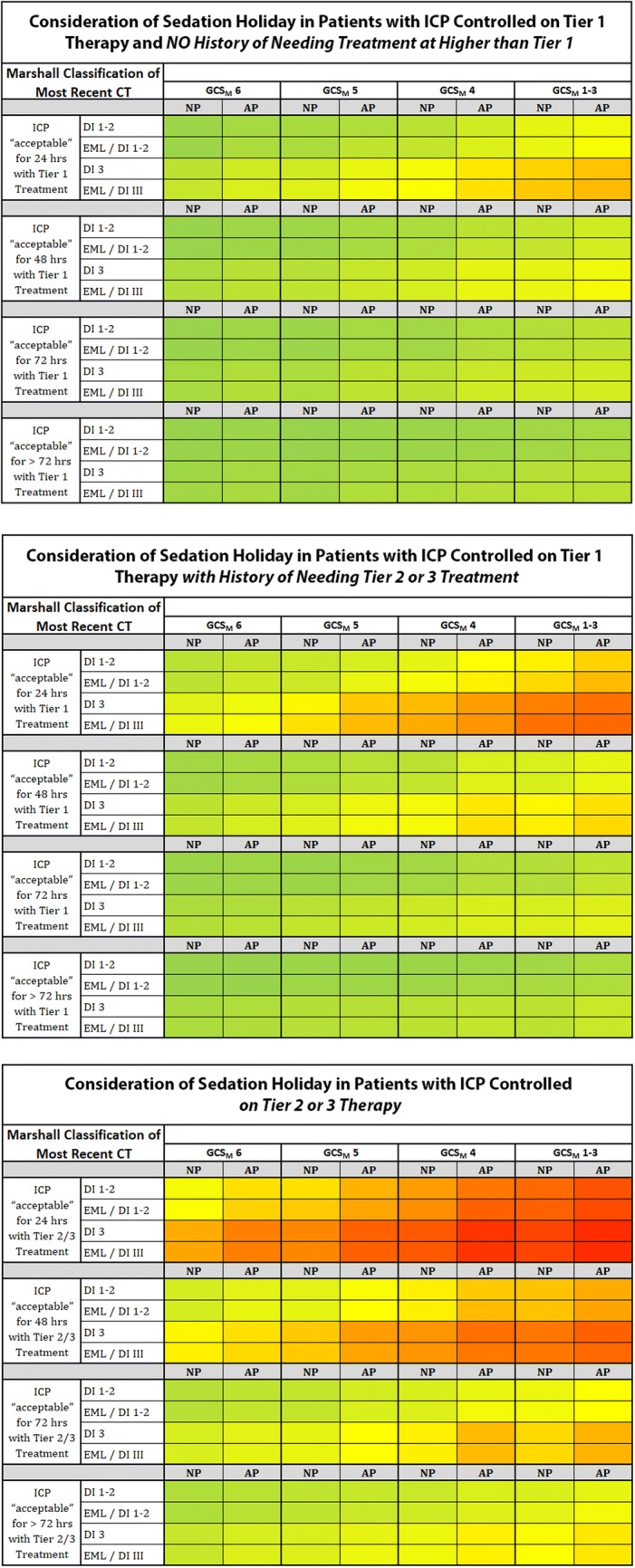Fig. 5.

Consensus views on the safety of performing a sedation holiday aimed at obtaining an accurate neurological examination in patients whose ICP is controlled under different degrees of active management. The heatmap represents a summary analysis of the likelihood of each panelist to halt sedation to get an optimized neurological exam under differing conditions of stable pupillary status, GCS [20] motor score, modified CT classification (see “Methods”), duration of acceptable ICP with ongoing treatment, and degree of treatment previously required for any intracranial hypertension (none, Tier 1, or Tier 2 or 3). Green, yellow, and red indicate “safe to proceed”, “consider proceeding with caution” and “do not proceed”, respectively, with transitional shades reflecting intermediate trends. To use, choose the heatmap representing the ICP treatment history, then the appropriate status cell reflecting categorization of the patient in terms of the variables presented. The color in the relevant cell reflects the tendency of the CWG to perform a sedation holiday in that circumstance. It is up to the treating physician to consider the value of that tendency in making the final decision. AP abnormal pupils, CT computed tomography; DI diffuse injury as defined in the Marshall CT Head Score, GCS Glasgow Coma Scale, EML evacuated mass lesion as defined in the Marshall CT Head Score, ICP intracranial pressure, NP normal pupils
